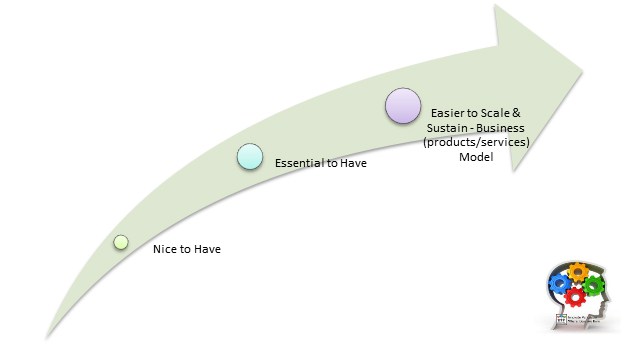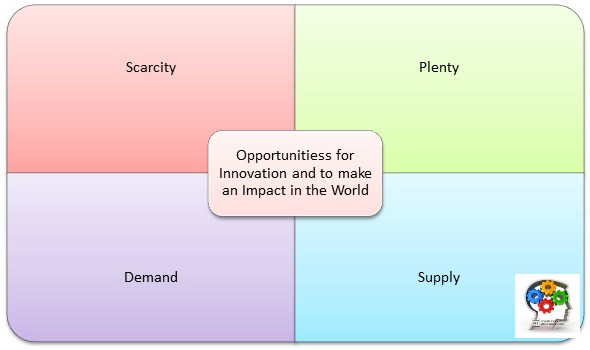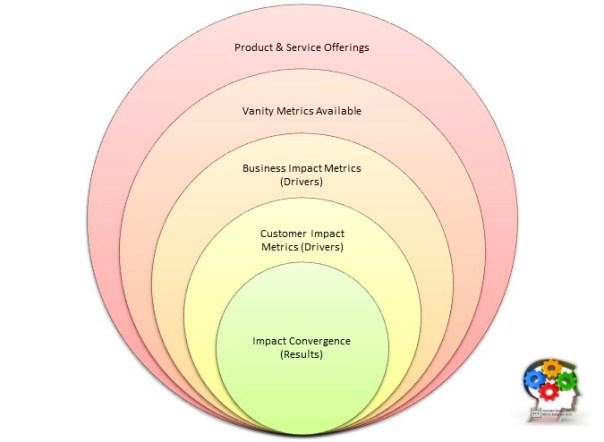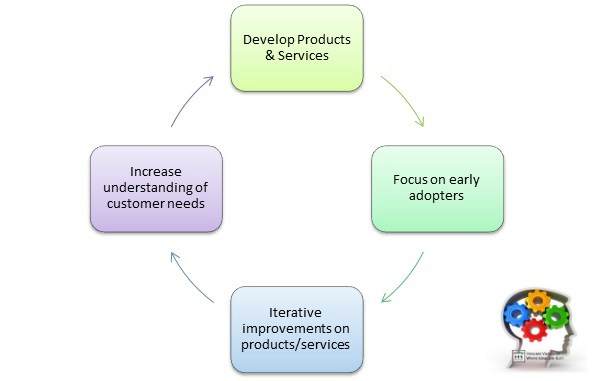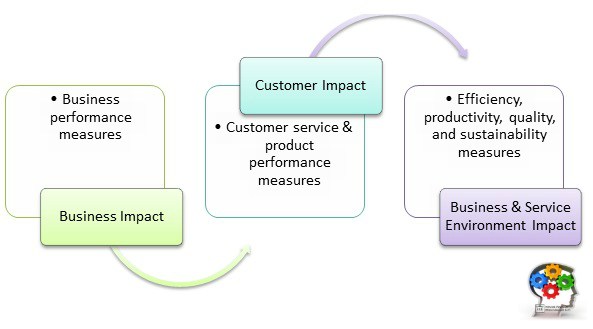Identifying which problems to solve is open to your business’ core competencies, industry, and values. The ability to identify problems worth solving can thus be used to differentiate essential business product or services versus those that are nice to have. The difference between these two can be substantial as the former category is arguably more sustainable and has the potential to have a larger impact in the customer’s life.
In a world of plenty and scarcity, the ability to identify problems to solve represents an opportunity to make a difference. Where plenty exists one could imagine that few opportunities to make a difference are also available. Whereas where scarcity exists there is likely an absence of resources, technologies, and scalable ideas to solve the problem. Between these two (plenty vs scarcity) represents an opportunity for innovation and to make a positive impact in the world.
Supply & Demand Matrix: Identifying Core Customer Problems to Solve
Learning to do more with less represents the ultimate challenge for those of us who are looking to positively change the world as it exists. An iterative change of how existing resources and assets are used is unlikely to have the same impact on the world as – a dramatic change. The term Disruption is often used to denote not only a large scale systemic impact but the dramatic and novel mechanism (or tool) used to achieve it.
Whether this market ‘disruption’ realizes real value is depending on one’s perspective but it can be argued that evaluating quality is potentially less arbitrary. Using scalability or profit as metrics for evaluating impact, or identifying problems worth solving, face the same challenges in that these are not measures that emphasize the customer; instead, they emphasize business drivers that determine the relative success and sustainability of the team’s effort.
Customer impact is not the same as business impact. In order to generate sustainable values, both of these impact domains need to be incorporated into ongoing planning discussions, process & performance evaluation, as well as product & service design efforts.
Customer impact can be defined as:
- The extent to which their problem is solved (a higher rating is better)
- Satisfaction rates (a higher rating is better)
- Customer attitudes (a higher rating is better)
- Customer experience (a higher rating is better)
Business impact can be defined as:
- Profits (a higher rating is better)
- Customer acquisition costs (a lower rating is better)
- Development costs (a lower rating is arguably better depending on goals, resources, & inputs)
Both of these converge on the following metrics:
- Retention rates (a higher rating is better)
- Upsell rates (a higher rating is arguably better depending on markets, customer demographics, & targets)
- Referral rates (a higher rating is better)
- Organic brand promotion rates (a higher rating is better)
Additional ‘vanity metrics’ are also available, although these are weakly correlated with impact:
- Likes
- Shares
- Follows
- Comments
Vanity metrics provide a useful example of just how important it is to balance internal & stakeholder interests. Business measures alone are unlikely to drive innovation and sustainability initiatives sufficient to retain external stakeholders (users of the business’ products/services). Customer retention requires the offering of products & services that solves a bona fide need.
The key to developing a profitable and sustainable business resides in also recognizing that internal & external impact goals drive which business model is adopted. This in turn influences which products & service offerings are developed.
A system’s approach to product & service design, development, evaluation, and execution is significantly more likely to produce sustainable benefits to both stakeholder groups. The following three questions can be used to evaluate what product & service offerings (when compared to other opportunities or priorities) are likely to offer the most value:
- Is your offered ‘solution’ a nice to have service/product or essential to the customer’s quality of life? Essential products & services are typically easier to promote and are likely to have a larger impact on the customer’s lifestyle.
- How is their life changed with your service/product? Essential products/services are more likely to have a dramatic impact on the customer’s lifestyle than ‘nice to have’ products/services.
- Is your service/product ‘readily’ available to the customers who have this problem? If your business’ products/services are inaccessible to customers (due to price, etc.) the potential and beneficial impact is diminished. As access is increased so is your business’ ability to positively impact the customer’s lifestyle.
In an effort to increase accessibility (and business sustainability) the executives’ core focus may begin with early adopters of the business products/services, iterative improvements to increase scalability/value/& costs, and gaining a better understanding of the customers’ needs. With each step, the business model comes closer to realizing a vision that can truly make a difference.
How you go about delivering impact is just as important as the results. This turns the traditional supply vs demand model on its side by ensuring that both internal & external stakeholders are represented in each group. This insight is not just limited to the processes and decisions made during the initial stages but also refers to how projects are prioritized and evaluated, resources are allocated, and the branding that results.
Conclusions
Hopefully, your business’ vision is about more than just making profits. If it is you will likely find it difficult in competing with rivals in your industry, keeping customers satisfied, and setting benchmarks & standards as the industry leader. The perceived tension between internal (business) and external (customer) drivers is more a myth than a reality. A collaborative relationship between the two benefits both the business’ sustainability as well as helps solve the customer’s problems. Although there will always be elite products to sell and market to the elite, the impact (evaluated based on normative non-financial values) these products & services have on the world is open to debate.
Identifying which problems to solve is open to your business’ core competencies, industry, and values. Access has a lot to do with what values can be realized and the impact a business can achieve. As a result, the world continues to need early stage investors, startups, entrepreneurs, and visionaries to identify where things can improve. Don’t use scarcity as an excuse to avoid developing a solution. Use it as an excuse to innovate and lead the industry with new solutions!
How did your business first identify which problems to solve? Leave your comments below.
